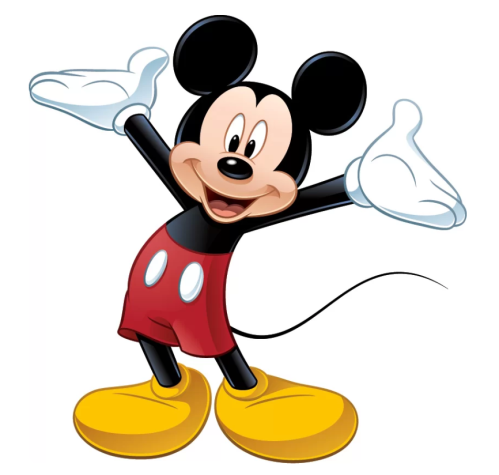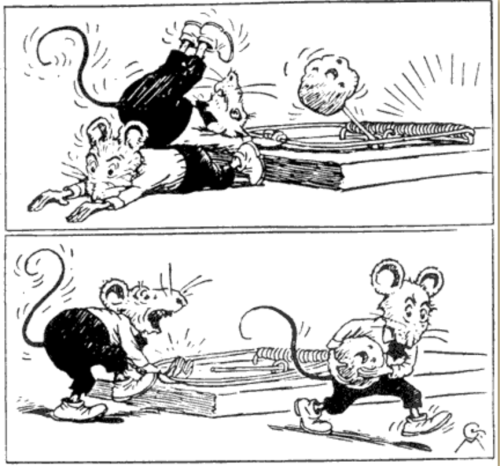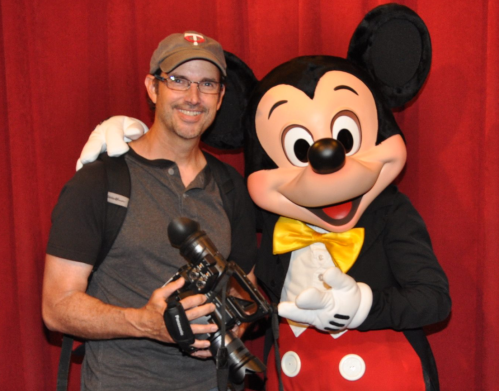“The first Mickey Mouse was made by twelve people.”
Walt Disney
(It is debated whether Disney or Ub Iwerks drew the first Mickey)
“According to market research, Mickey Mouse has a 97% name recognition in the United States, which is even higher than Santa Claus.”
Elizabeth Segran
Fast Company article 4.01.19

“The original Mickey was rattier and leaner. He also had clawed feet.” — Garry Apger
As original a thinker as Walt Disney was, he didn’t create things out of thin air. And the creation of Mickey Mouse was no exception. The inception was probably somewhere between Aesop’s Fables (that Disney enjoyed reading) that often featured mice and real life mice that were around the Hyperion Studios where Disney and his team created their short animations, and drawings of a character named Johnny Mouse drawn by Clifton Meek.

Johnny Mouse by Clifton Meek
Looking for a character to animate, Walt drew a picture of a mouse. With Disney’s team of artist, that mouse would evolve into the character Mickey Mouse and first appear in the 1928 short Plane Crazy.
It’s impossible to watch Plane Crazy today and not see that first iteration of Mickey as devious —after all, he does try to scare Minnie into giving him a kiss. She not only refuses but jumps out of the plane that Mickey is piloting. Spoiler alert; Fortunately, Minnie does have a parachute and lands safely.
Mickey’s second film Barn Dance was his first film that showed that Disney and annimator Ub Iwerks had hit something special as it played in more theaters.
Over the years, both Mickey’s movement—and morals—improved, and he found a wide audience. Mickey Mouse offered cheap escapist entertainment to audiences that had just experienced the Wall Street crash of 1929, and the start of The Great Depression.) By 1930, Mickey was getting 30,000 fan mail letters a month. But his relationship with Minnie was still complicated.
Disney did not hide his admiration for Charlie Chaplin, calling him “the greatest of them all.” In Neal Gabler’s book Walt Disney, he quotes animator Ward Kimball as saying, “Walt kept the feeling of this little droll kind of pathetic little character who was always being picked on. But cleverly coming out on top anyway.”
“We wanted something appealing, and we thought of a tiny bit of a mouse that would have something of the wistfulness of Chaplin—a little fellow trying to do the best he could.”
Walt Disney
Another influence on Mickey Mouse was the actor Douglas Fairbanks, who was known for his action movies The Thief of Bagdad, Robin Hood, and The Mark of Zorro. Disney animator Ub Iwerks said of Fairbanks, “He was the superhero of his day, always winning, gallant and swashbuckling.”
Iwerks was the one who took Disney ‘s early rough drawings of Mickey and brought him to life in the early films. Though Iwerks and Disney had worked together since their Kansas City days, and on Silly Symphonies together, the two had a falling out and parted ways in 1930.
But Disney and Iwerks—with a little Chaplin and Fairbanks—created one of the great and most loved characters in film history. One whose popularity that moved from silent films to talkies, and as a brand has moved all the way into the current digital era—almost 100 years after his first film.
But every mouse has his day, and as a movie star Mickey seemed to be peak somewhere in the late—1930s. In 1935 there were 500 million paid admissions to see a Mickey Mouse movie. (To put that in perspective, Gone with the Wind has sold more tickets than any single movie—202,286,100 .) Granted the releases over ten movies that year, but 500 million admissions is a big number. At Mickey is the character that kicked off the whole merchandising thing in Hollywood, and Walt ended up making more on shirts, dolls, toys, etc. than on Mickey movies.
Gabler points out that Mickey was the victim of his own success. As animation got more realistic, Mickey had an identity crisis. Was he more mischievous like Chaplin, or more a hero like Fairbanks? Was he man, boy, or animal? His body movement changed, as did his hands and feet change in this new style of animation. He became nicer—and more boring. Then, like all stars sooner or later, he got upstaged by a rising star—the wacky, brash Donald Duck.
If you have Disney+ you can see in high quality how sound, color, and animation techniques transformed both Mickey Mouse and Disney Studios over the years.
Related links:
Stealing for Screenwriters (According to Paul Schrader)
Stealing from Shakespeare
Fueling Your Imagination (Jarmusch Style) “Nothing is original. Steal from anywhere that resonates with inspiration or fuels your imagination.”
Creating Under the Influence “Oh, I’ve stolen from the best. I mean I’ve stolen from Bergman. I’ve stolen from Groucho, I’ve stolen from Chaplin, I’ve stolen from Keaton, from Martha Graham, from Fellini. I mean I’m a shameless thief.”—Woody Allen
Movie Cloning (Part 2) “I think it’s fine for young [filmmakers] to out and out rip off people who come before them because you always make it your own.” Francis Ford Coppola
P.S. I had this photo taken with Mickey about five years ago when I did a shoot at Walt Disney World. Mickey has aged better than most.

